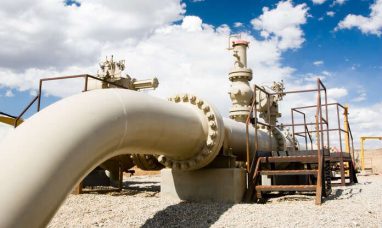VANCOUVER, British Columbia, Oct. 31, 2022 (GLOBE NEWSWIRE) — Pulse Oil Corp., (“Pulse” or the “Company”) (TSXV: PUL) is pleased to announce that the Company has recently completed a number of critical steps to move forward with the Company’s Enhanced Oil Recovery (“EOR”) project in the Bigoray area of Alberta, Canada. The Company has agreed to terms and secured a solvent supply, one of the last remaining commercial project paths before actual injection can begin. Pulse has also secured an agreement for oil and gas sales for the EOR project with more details of these advancements provided below.
EOR Operational Advancements:
-
Pulse has secured a solvent supply to begin injecting into the first of two reservoirs (Nisku D) estimated to start in November 2022 with a large mid-stream company (the “Solvent Supplier”). The contracted amount of solvent is for the period December 2022 through to March 31, 2023 for up to 6,000 m3 per month of solvent (approximately 38,000 barrels). Going forward after March 31, 2023, Pulse has the option to lock-in a minimum of 6,000m3/d of solvent supply on an annual basis or increase the overall volumes to initiate injection into Pulse’s second reservoir (Nisku E) at that time.
-
Pulse has secured an agreement with a second large mid-stream company to construct and operate a Lease Automatic Custody Unit (“LACT”) on Pulse’s behalf. This facility expansion will tie-in the mid-streamers facilities with Pulse’s existing pipelines to measure all oil and gas volumes produced from Pulse’s properties at Bigoray. The project will provide the mechanisms to transfer custody to the buyer of Pulse’s oil and gas from the Bigoray EOR project.
-
Pulse has filed the necessary applications with the Alberta Energy Regulator (AER) to approve of the Bigoray EOR project and injection well. It is anticipated that approval will be granted in November 2022.
-
Pulse has completed consultation with affected First Nations as part of the approval to expand our operational area to safely and efficiently accommodate the extra facility and trucking requirements associated with the EOR project. The project has recently been completed and the site is ready for installation of the remaining facility infrastructure.
-
Pulse has commissioned a third party pump manufacturer to build a fit for purpose injection skid to satisfy the company’s requirements to complete the injection of solvent for the EOR project. The pump is to be delivered in October with an estimated in service date of November 2022.
Pulse’s CEO Garth Johnson commented; “Our team is excited to dig into the final phases of initiating this EOR solvent flood. Pulse was originally created to initiate this project, and after surviving the past 3 years of global uncertainty, we managed to clean up our own balance sheet, acquire facility assets for the EOR at discounted prices, and remained debt free. We’re now ready to kick this well-proven process off, with injection scheduled to commence in December 2022.”
EOR Technical Updates
In May of 2019, Pulse released the results of a three-phase independent viability analysis by one of the world leading providers of technology for reservoir characterization, drilling, production and processing to the oil and gas industry.
The purpose of the study was to seek third-party confirmation that Pulse’s two 100% operated Nisku Pinnacle Reef reservoirs were viable candidates to initiate a solvent flood EOR scheme, similar to the fifty surrounding pools where successful solvent floods have already been initiated. A summary of the results follows:
- The three geo-technical phases of the EOR study, were the first ever utilising 3-dimensional seismic data on the Nisku D & E pinnacle reefs.
- The reservoir simulation conducted as part of the EOR study included over 200 separate computer iterations of historical production, adjusting the geo-model after every iteration to ensure the model was as accurate as possible based on historical production and modern 3-D interpretations, before beginning the solvent flood forecast.
- The detailed simulation allowed the team to model the most effective positioning of solvent injectors, optimum compositions, pressures and rates of injected fluids and optimum production take-points to maximise ultimate recovery from these established pools.
- The go-forward simulation under the EOR program resulted in a peak estimated Nisku D-Pool production rate of approximately 2,000 barrels of oil/day, with peak production, including Nisku E production increasing to approximately 3,000 barrels of oil/d. Although the independent study was commissioned by Pulse to focus only on the feasibility and forecast of oil production within Pulse’s Nisku D & E pinnacle reefs, Pulse’s management team also expects to see similar amounts of gas production on a BOE basis from gas breakout as oil flows to the surface. Given recent increases in natural gas prices in Alberta, the gas could become as important commercially as the oil recovered at Bigoray.
- This production simulation was prepared, at Pulse’s request, to assume initiation of the solvent injection into the two reservoirs was staggered by 12-18 months. Beginning with the Nisku D Pool, and then following with the Nisku E Pool allows the Company to preserve working capital and begin generating cash flow during the initial years of the program.
- Pulse, subject to having sufficient working capital, can accelerate this schedule to initiate the E Pool EOR program at any time in conjunction with the D pool. The simultaneous implementation of both pools results in peak forecast rates of approximately 5,000 barrels/day.
-
Importantly, the estimate for Discovered Petroleum Initially-In-Place (“DPIIP”) as part of the newly interpreted geo-model was calculated at 33.5 million barrels of oil, which is 26% higher than the DPIIP volume calculated by the Alberta Energy Regulator (“AER”) of 26.5 MM barrels.
(1)
-
The estimated total oil recovery factor can be doubled from the currently recovered approximately 35% to at least 70% of PIIP.
(
1
)
-
The estimated incremental oil reserves from the Nisku D and E EOR program could range from 9.28 million barrels to as high as 11.73 million barrels.
(2)
(1)
The Resource Assessment was prepared in accordance with National Instrument 51-101 – Standards of Disclosure for Oil and Gas Activities of the Canadian Securities Administrators (“NI 51-101”) and the Canadian Oil and Gas Evaluation Handbook (“COGE Handbook”).
(2)
All disclosure of reserves in the statement has been prepared in accordance with the COGE Handbook.
About Pulse
Pulse is a Canadian company incorporated under the Business Corporations Act (Alberta) that is primarily focused on a 100% Working Interest Enhanced Oil Project Located in West Central Alberta, Canada. The project includes two established Nisku pinnacle reef reservoirs that have been producing sweet light crude oil for over 40 years. The Company plans to institute a proven recovery methodology (NGL solvent injection) to further enhance the ultimate oil recovery from these two proven pools. With under 10 million barrels of oil recovered to date, and representing approximately 30% recovery factor from the pools, Pulse is moving forward to execute the EOR project and unlock significant value for shareholders. Pulse’s total reclamation liabilities are just $2.46 million which, when compared to many peers in the industry in Western Canada, are very low.
Neither the TSX Venture Exchange nor its Regulation Services Provider (as that term is defined in the policies of the TSX Venture Exchange) accepts responsibility for the adequacy or accuracy of this release.
For further information contact:
Pulse Oil Corp.
Garth Johnson
CEO
604-306-4421
[email protected]
Drew Cadenhead
President
604-909-1152
[email protected]
Barrels of oil equivalent (boe) is calculated using the conversion factor of 6 mcf (thousand cubic feet) of natural gas being equivalent to one barrel of oil. Boes may be misleading, particularly if used in isolation. A boe conversion ratio of 6 mcf:1 bbl (barrel) is based on an energy equivalency conversion method primarily applicable at the burner tip and does not represent a value equivalency at the wellhead. Given that the value ratio based on the current price of crude oil as compared to natural gas is significantly different from the energy equivalency of 6:1, utilizing a conversion on a 6:1 basis.
Forward Looking Statements:
This news release contains “forward-looking information” within the meaning of applicable Canadian securities legislation. All statements, other than statements of historical fact, included herein are forward-looking information. In this news release, such statements include but are not limited to Pulse’s operations and oil and gas resources. There can be no assurance that such forward-looking information will prove to be accurate, and actual results and future events could differ materially from those anticipated in such forward-looking information.
This forward-looking information reflects Pulse’s current beliefs and is based on information currently available to Pulse and on assumptions Pulse believes are reasonable. These assumptions include, but are not limited to, conditions facing Pulse at the time of the planned expenditure in advancing the Bigoray EOR project, conducting operations on time and on budget and the anticipated reserves, resources, production, revenue and cash flow anticipated from these operations. Forward-looking information is subject to known and unknown risks, uncertainties and other factors that may cause the actual results, level of activity, performance or achievements of Pulse to be materially different from those expressed or implied by such forward-looking information. Such risks and other factors may include, but are not limited to: general business, commodity prices, economic, competitive, political and social uncertainties; general capital market conditions and market prices for securities; consistent production and cash flow from current operations, the actual results of future operations; competition; changes in legislation, including environmental legislation, affecting Pulse; the timing and availability of external financing on acceptable terms; and loss of key individuals. A description of additional risk factors that may cause actual results to differ materially from forward-looking information can be found in Pulse’s disclosure documents on the SEDAR website at www.sedar.com. Although Pulse has attempted to identify important factors that could cause actual results to differ materially from those contained in forward-looking information, there may be other factors that cause results not to be as anticipated, estimated or intended. Readers are cautioned that the foregoing list of factors is not exhaustive. Readers are further cautioned not to place undue reliance on forward-looking information as there can be no assurance that the plans, intentions or expectations upon which they are placed will occur. Forward-looking information contained in this news release is expressly qualified by this cautionary statement. The forward-looking information contained in this news release represents the expectations of Pulse as of the date of this news release and, accordingly, is subject to change after such date. However, Pulse expressly disclaims any intention or obligation to update or revise any forward-looking information, whether as a result of new information, future events or otherwise, except as expressly required by applicable securities law.
Reserves
All production and reserves quantities included in Pulse’s public filings have been prepared in accordance with Canadian practices and specifically in accordance with National Instrument 51-101 Standards of Disclosure for Oil and Gas Activities. These practices are different from the practices used to report production and to estimate reserves in reports and other materials filed with the SEC by United States companies. Accordingly, information concerning resources, deposits, production, reserves and any similar information of the Company may not be comparable with information made public by companies that report in accordance with United States standards.
Resource Definitions
Resources encompasses all petroleum quantities that originally existed on or within the earth’s crust in naturally occurring accumulations, including Discovered and Undiscovered (recoverable and unrecoverable) plus quantities already produced. “Total Resources” is equivalent to “Total Petroleum Initially In-Place”. Resources are classified in the following categories:
Total Petroleum Initially In-Place (“TPIIP”) is that quantity of petroleum that is estimated to exist originally in naturally occurring accumulations. It includes that quantity of petroleum that is estimated, as of a given date, to be contained in known accumulations, prior to production, plus those estimated quantities in accumulations yet to be discovered.
Discovered Petroleum Initially In-Place (“DPIIP”) is that quantity of petroleum that is estimated, as of a given date, to be contained in known accumulations prior to production. The recoverable portion of DPIIP includes production, reserves, and Contingent Resources; the remainder is unrecoverable.
Contingent Resources are those quantities of petroleum estimated, as of a given date, to be potentially recoverable from known accumulations using established technology or technology under development but which are not currently considered to be commercially recoverable due to one or more contingencies. Economic Contingent Resources (ECR) are those contingent resources that are currently economically recoverable.
Undiscovered Petroleum Initially In Place (“UPIIP”) is that quantity of petroleum that is estimated, on a given date, to be contained in accumulations yet to be discovered. The recoverable portion of UPIIP is referred to as Prospective Resources and the remainder is unrecoverable.
Prospective Resources are those quantities of petroleum estimated, as of a given date, to be potentially recoverable from undiscovered accumulations by application of future development projects. Prospective Resources have both an associated chance of discovery and a chance of development.
Unrecoverable is that portion of DPIIP and UPIIP quantities which is estimated, as of a given date, not to be recoverable by future development projects. A portion of these quantities may become recoverable in the future as commercial circumstances change or technological developments occur; the remaining portion may never be recovered due to the physical/chemical constraints represented by subsurface interaction of fluids and reservoir rocks. Uncertainty Ranges are described by the Canadian Oil and Gas Evaluation Handbook as low, best, and high estimates for reserves and resources as follows:
Low Estimate: This is considered to be a conservative estimate of the quantity that will actually be recovered. It is likely that the actual remaining quantities recovered will exceed the low estimate. If probabilistic methods are used, there should be at least a 90 percent probability (P90) that the quantities actually recovered will equal or exceed the low estimate.
Best Estimate: This is considered to be the best estimate of the quantity that will actually be recovered. It is equally likely that the actual remaining quantities recovered will be greater or less than the best estimate. If probabilistic methods are used, there should be at least a 50 percent probability (P50) that the quantities actually recovered will equal or exceed the best estimate.
High Estimate: This is considered to be an optimistic estimate of the quantity that will actually be recovered. It is unlikely that the actual remaining quantities recovered will exceed the high estimate. If probabilistic methods are used, there should be at least a 10 percent probability (P10) that the quantities actually recovered will equal or exceed the high estimate.
Development Unclarified is a project maturity sub-class of contingent resources that refers to the development plan evaluation is not complete and there is ongoing activity to resolve any risks or uncertainties.
Certain resource estimate volumes disclosed herein are arithmetic sums of multiple estimates of DPIIP or UPIIP, which statistical principles indicate may be misleading as to volumes that may actually be recovered. Readers should give attention to the estimates of individual classes of resources and appreciate the differing probabilities of recovery associated with each class as explained under this Resource Definitions section.
Featured image: Depositphotos © Chutinma Sonma















